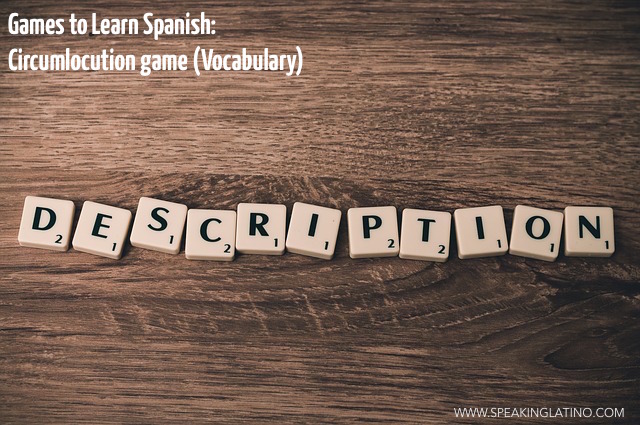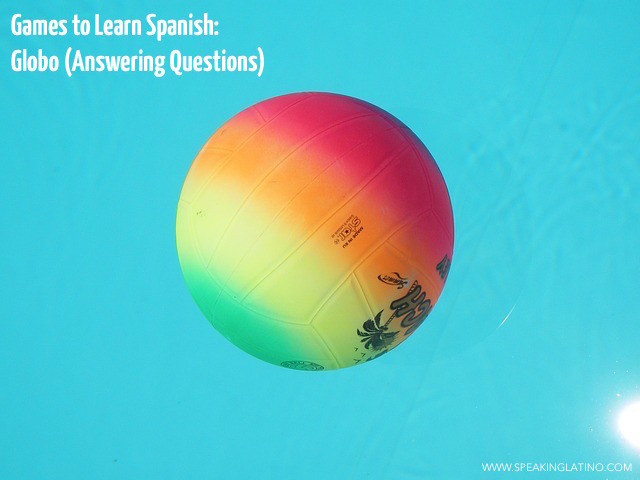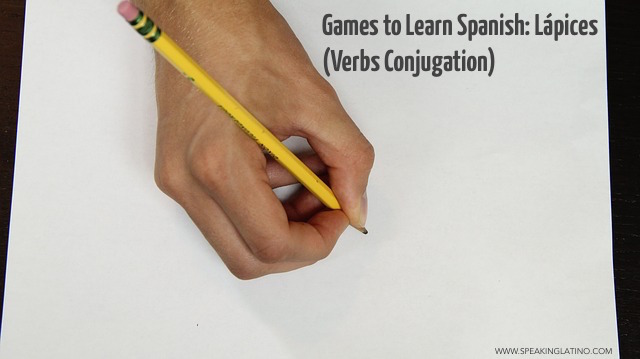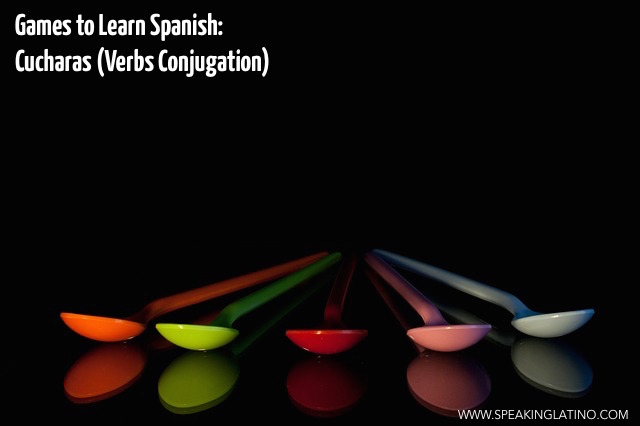We all know that students always look forward to playing games in the classroom. It is usually the very first question they ask upon entering class. Let’s face it, as teachers we like them too since they can be so effective and engaging. There are going to be games that fall flat on their faces, however here are 5 tried and true games to learn Spanish that are quick and easy to run in a classroom and work well both in secondary education and with adults.
5 Classroom Games to Learn Spanish

1. Circumlocution game (Vocabulary)
Circumlocution is a huge skill to produce, especially with second language learners. What happens if you cannot remember a word? Well, you work around it! In this game, modeled off of a few game shows, have students partner up or form groups of 3-4. Place a topic up on the board. It may be as general as nouns and adjectives, or as specific as female celebrities. Everyone can see this word. Once the topic is revealed, one or two people in each group must turn their backs to the board. At this point half of the class can see the board; display the magic words (4-5). The goal is for the students reading the words to describe them to the other students WITHOUT actually saying the word. Give them a time limit, usually 2-3 minutes is sufficient. If you have more advanced students, make the time a minute or less. As you can see, students are left to their own devices and, hopefully, your voice is simply to talk them through how to describe the words without actually saying them!

2. Globo or any other fun word you want to use (Answering questions about Spanish vocabulary, grammar, culture, etc.)
This is essentially a review game that the whole class is involved in using a beach volleyball! Go buy one, right now… they are probably only $.99 due to the season! It is usually a boy versus girls game, or whatever way you want to divide the class into two parts. Students hit the volleyball across the room, against the walls, etc. The rules are no spiking (hard hits) and don’t hit the floor or the ceiling. If a student spikes, come up with a consequence because this may lead to hurt people and/or feelings. If the ball hits the ground or ceiling then student gets a question (vocabulary, grammar, culture or a variety). You can decide on your points, but vary it from time to time. It keeps them on their toes. The game gets a little crazy, and you must get into the game too for the students to really buy into it and enjoy having some time to let go!

3. Lápices (Spanish verbs conjugation)
This is a wonderful way to make conjugation feel like a game rather than a chore. Before class, come up with a set of verbs that the students need to practice or review. At the beginning of class, split the students into groups of 3 or 4. In each group, the only materials needed are 1 writing utensil, a piece of paper per person, and a die. Choose a magic number. Change the number each time you play, students LOVE guessing what el número mágico is as an added bonus! The students will need to roll the die first to decide who goes first. They must roll the magic number! As they are rolling, display your list of verbs. Whoever wins the roll takes the writing utensil and starts conjugating in any order. The other 2-3 students will keep rolling. When someone rolls the magic number, they are able to grab the writing utensil and start conjugating on their own paper. This can go on for however long you want, but try to give yourself some time at the end of class to go over the correct conjugations of the verbs. The “winners” are all of the students because they are practicing Spanish, but if they MUST have an actual winner, the students with the most correct conjugations are deemed los ganadores.

4. Chispita (Spelling)
This is one of the best spelling games to learn Spanish. If you have heard of the English game Sparkle (chispita in Spanish), this is the same thing, just in Spanish. Students sit on their desks. The teacher gives a word in English, and the students spell the word letter by letter. Have them include articles, accents, tildes, adjective agreement, etc. For accents, have the students say acento after the accented letter. Once the word is completed, the next student must say chispita. The student after the chispita must sit down. The last person sitting on their desk is el rey/la reina de chispita!

5. Cucharas (Spanish verbs conjugation)
This is another fun conjugation game to learn Spanish that mixes the kid’s card game of Spoons with Spanish. This will take a bit of extra organization from you, but the students rave about this. Make a set of cards (use a word processor, add a table to the document and write out infinitives and conjugations in light grey). Place a set of spoons in the middle of the group (there should always be one less than the group). If you want to use these “cards” again, laminate them. The purpose of the game is to match up the infinitive with the conjugations and, sneakily, grab a spoon before someone else does. The students need to be vigilant because if someone else grabs a spoon because of their complete set, the rest of the group can then grab a spoon to be safe, even if they have not completed their set. The student without a spoon isn’t “out” because they still need to practice, right?
Do you have any favorite games to learn Spanish that you enjoy using?
Spanish Language Games: Other Ideas
Games in Spanish: Language Learning or Entertainment
Check out these other articles to help you Learn Spanish.